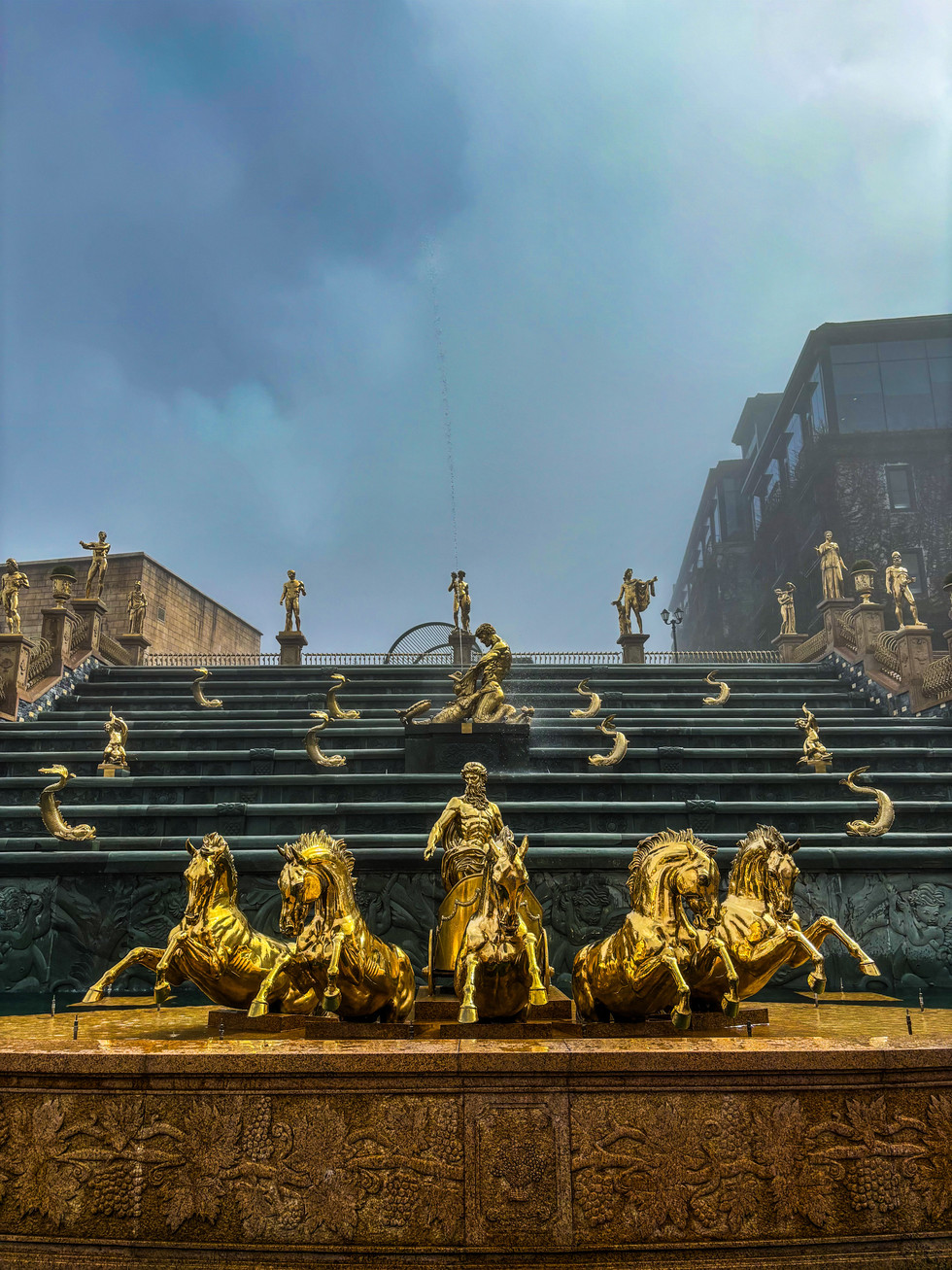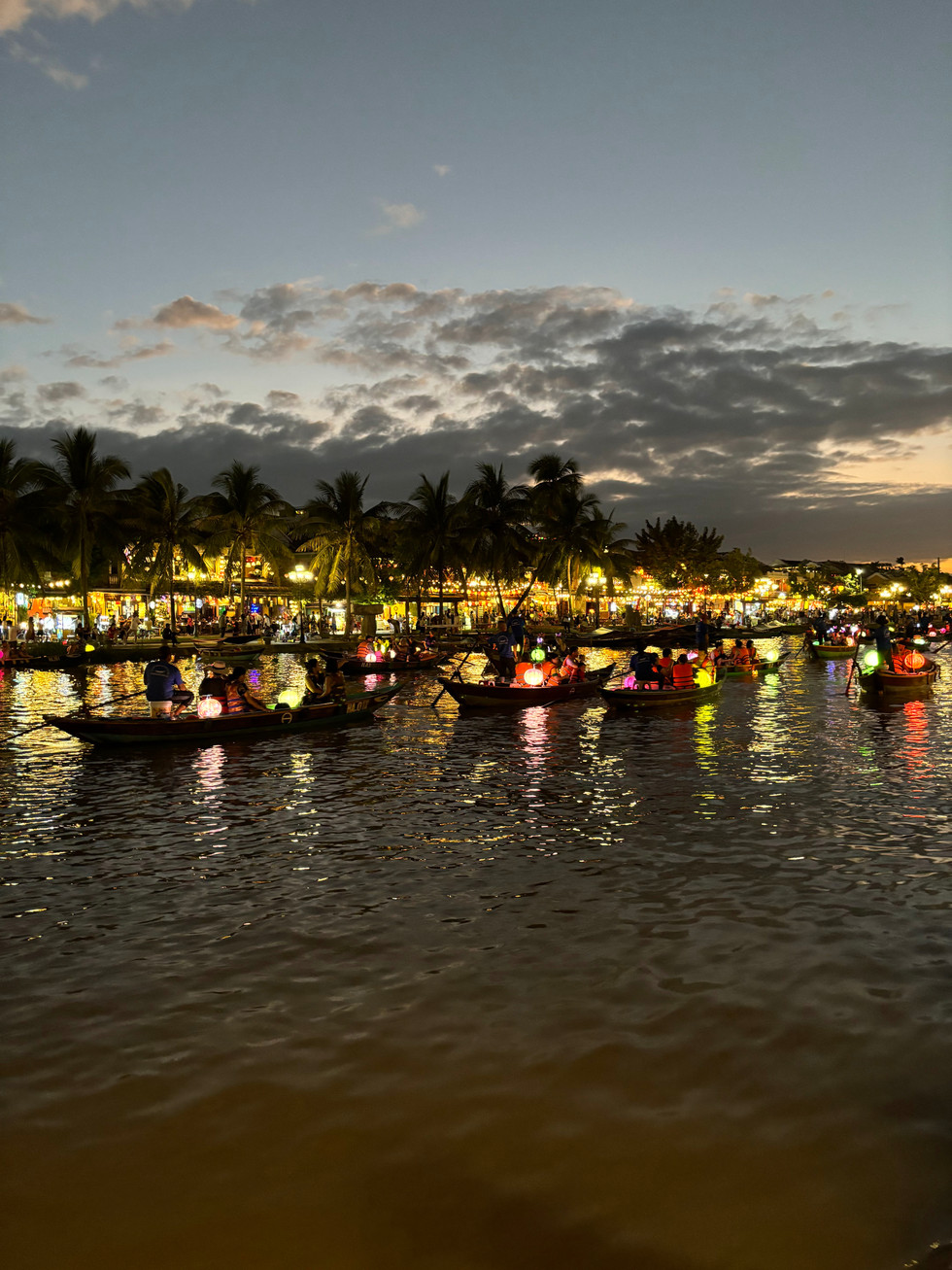Timeless charm of Vietnam
- Aditi Lad

- Mar 30
- 7 min read
After exploring the historic wonders of Cambodia, it was time to unravel the vibrant heritage and history of Vietnam. This southeastern country encompasses a diverse landscape, bustling cities that exude deep cultural significance adorned with various Buddhist pagodas and memorials that pay homage to the nation’s icons. Additionally, the country has recently acquired the title of most preferred tourist destination due to its favorable exchange rates, easy access, and improved visa policies. Situated on the easternmost edge of the Indochinese Peninsula, the country borders China, Cambodia, and Laos, with an eastern coastline on the South China Sea. Vietnam stretches about 1,650 km from north to south and boasts a diverse terrain with mountains and hills in the northern and central parts and a strong river network in the south.

After a delayed flight from Siem Reap, we reached Hanoi in the evening and decided to pay a quick visit to Ba Dinh Square, which holds significant historical importance due to President Ho Chi Minh’s reading of the Proclamation of Independence on Sept 2, 1945, and also hosts a mausoleum where the president was laid to rest. This square is a large open area holding up to 20,000 people during national ceremonies and the daily flag-raising ceremony. The square is surrounded by quite a few administrative and political buildings such as the Central Office of the Communist Party, the headquarters of the Ministry of Foreign Affairs, the Presidential Palace, and the National Assembly building, among others.
Within walking distance of the mausoleum lies the One Pillar Pagoda, a historic Buddhist temple of great cultural importance, symbolizing purity and spiritual awakening in Buddhism. Constructed on a single stone, the pagoda's design is inspired by the lotus flower. It is surrounded by a lotus pond, enhancing the symbolism of spirituality rising above the material world. The entrance features a three-arched gate, with the largest arch symbolizing the three paths of Buddhist practice—morality, concentration, and wisdom—while the stairs to the temple signify the ascent toward enlightenment, embodying profound symbolic meaning.
Vietnam embraces culture with the highest regard, which shines through their various pagodas and shrines. One such monument is the Temple of Literature. This temple in the capital city, Hanoi, is known as the first national university in the country and stands as a symbol of tradition and culture. An epitome of ancient relics, the temple once boasted hundreds of renowned scholars who came here to study and practice. According to recent beliefs, the temple is most frequented by families whose children have opted for advanced studies in universities and visit the temple to seek blessings. The temple is intricately designed to demonstrate the stunning Van Mieu architecture, covering five main courtyards with distinctive styles. The first courtyard is decked with a lush green ambiance, with two specially designed gates on either side called Talent Gate and Virtue Gate, which express the expectation of the Vietnamese royalty towards the best achievements in the national educational system. The second courtyard, also known as the Pavilion of Constellation, is guarded by a main structure made of brick pillars and an upper wooden structure carved with patterns that embody the nation’s ancient and traditional beauty. The third courtyard consists of a square-shaped well, which represents the earth, and a circle on top, which denotes the sky. The fourth and fifth courtyards are considered to be the most sacred areas in the temple, with altars filled with offerings and incense, honoring the Vietnamese ancestors, and a temple-like structure that houses a statue of the famous Vietnamese teacher Chu Van An.
After the temple visit, it was now time to explore the one of the most iconic places in Vietnam – Ha Long Bay. This UNESCO World Heritage site struts with emerald green waters and sailing cruises between thousands of islands and islets that house innumerable caves for tourists to wander. These islands have been formed over thousands of years through limestone formations and are now home to various rainforests. The ideal way to explore this place is by booking a comprehensive cruise tour package, which includes round-trip transportation to and from Hanoi. While the cruise sails through the bay, witnessing the magical sunsets amidst the towering limestone rainforests and panoramic sunrise with the sun shining its light on the pearly waters is a sight to behold. We spent the evening relaxing on the deck and some kayaking before dinner and prepped ourselves for a quick early morning visits to the Trung Trang caves the next day.
Located on the Cat Ba island, these caves are a captivating natural site that stretches 300 meters through the mountain, offering visitors a glimpse into its rich geological and historical significance. During the Vietnam war, these caves served as a secret radio base for the naval command with traces of entertainment room, meeting room, and water tank and continue to be a part of these caves. These caves are bedecked with impressive stalactites and stalagmites formed over a million years as a result of incessant calcium deposits which resemble various shape formations.
After visiting the caves, we returned to our hotel in Hanoi, ready to catch a flight the next day to another up-and-coming tourist destination – Da Nang. Identified as one of the most rapidly growing cities, this city in central Vietnam has a lot to offer in terms of natural beauty, cultural history, and modern attractions. Upon our arrival, we proceeded to visit the Dragon Bridge, one of the city’s most iconic landmark stretched over the Han river. This engineering marvel was built to connect the eastern and western sides of the bridge and designed to resemble a dragon, which symbolizes power, good fortune and prosperity in Vietnamese culture. The bridge is best appreciated at night, when it is lit up with LED lights parading a fire-breathing effect. This view concluded our first day in Da- Nang and we were all set to explore Ba Na Hills the following day.

Located about 30 kilometres west of Da Nang, Ba Na hills is a quaint mountain resort wrapped in cool climate surrounded by breath-taking views and bejewelled with unique attractions. The hills are connected to the base through a cable-car which holds a Guinness World Record for being the longest non-stop cable car at 5,800 meters and offers a spectacular view of Da Nang coastline, mountains, and lush forests, one that is forever etched in your mind.
The key attraction at Ba Na Hills is the Golden Bridge which opened in 2018 and rapidly became and iconic landmark driving heavy influx of tourists to the city. This suspended bridge garnered all the attention due to the striking pair of giant hands that seem to be holding it making it appear as if a giant mythical creature gently cradles the structure.
Apart from the famous Golden Bridge, the hills also inhabit multiple other tourist attractions such as a replica of French village cobblestone streets, quaint houses, and bistro-style cafes, Linh Ung Pagoda which is a Buddhist temple complex with a 27 meters’ tall statue of Lady Buddha, an amusement park and Le Jardin d'Amour aka Garden of Love.
After spending a whole day exploring Ba Na Hills, we then proceeded to Hoi An, a city that radiates traditional significance through its ancient architecture inspired from Chinese, Japanese, and French cultures. This town is well known for its narrow, winding streets, traditional yellow-painted buildings, and lantern-lit alleys. Moreover, the town is also well known for its bustling street markets, tranquil cafes, old houses, assembly halls and lastly the lantern festival which is held on the 14th day of each lunar month, where the entire town in bathed in the soft glow of colorful lanterns.
Our last and final stop for the trip was Saigon aka Ho Chi Minh city. Being the southern capital of Vietnam, this city is known as a dynamic hub of history and modernity due to its busy streets, colonial architecture and vibrant street food along with its integral contribution during the Vietnam War. We had the opportunity to visit two significant sites- the War Remnants Museum which showcases the harsh realities of the conflict through photos, military equipment, and personal stories during the Vietnam War and the Cu Chi Tunnels which formed an extensive underground network used by the Viet Cong during the war.
Another jewel of Saigon is the Mekong Delta, a vast network of rivers, swamps, and islands in southern Vietnam, where the mighty Mekong River reaches its final destination before flowing into the South China Sea. This region is famous for its lush scenery, lively floating markets, and distinctive lifestyle. The Delta is home to many floating villages where people live, work, and travel by boat. The homes, markets, and schools are built on stilts or directly on the water, making the region’s way of life deeply intertwined with the river. We explored this place by sailing through the river and tributaries in the traditional wooden boats cruising through narrow canals and past floating houses and farms
We scheduled our trip for December, hoping to enjoy favourable weather in both Cambodia and Vietnam. While Cambodia was warmer than anticipated despite the winter season, Vietnam greeted us with pleasant, comfortable weather. As it was the wet season, Hanoi greeted us with misty weather and occasional showers, while Ha Long Bay was breezy, thanks to its vast landscape. Da Nang stayed pleasant, with light rain at Ba Na Hills due to its higher elevation, and Saigon was warm and humid, influenced by its proximity to the coast. Given its length, traveling between multiple cities can be challenging, especially on a week-long trip. The most efficient way to handle this is by opting for air travel, which ensures smooth connections and reduces travel time.
In addition to the ranging weathers, Vietnam also boasts of diverse culture across its stretch. Northern Vietnam is deeply rooted with French culture due to its history as a French colony from the mid-19th century to 1954 leaving a long-lasting impact on Vietnamese architecture, cuisine, language and social customs while the southern part is dominated by American culture and is fairly recent, especially post-Vietnam war due to the extensive cultural exchange between the two countries. While the presence of these cultures add that extra finesse, Vietnam has continued to preserve its indigenous charm through its history, art, traditions and ethnicity, making it an explorer’s paradise.



























































































































































Loved it!!!
Loved this! Vietnam has such a unique vibe, and your take on the Lantern Festival was super cool. Makes me want to book a trip ASAP!
Loved this post!
Your vivid descriptions and stunning photos have me dreaming of Vietnam. Thank you for sharing your travels and inspiring others to explore this beautiful country.
Keep up the good work